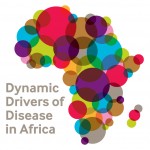 The Dynamic Drivers of Disease in Africa programme saw natural and social scientists working on four zoonotic diseases, each affected in different ways by ecosystem changes and having different impacts on people’s health, wellbeing and livelihoods.
The Dynamic Drivers of Disease in Africa programme saw natural and social scientists working on four zoonotic diseases, each affected in different ways by ecosystem changes and having different impacts on people’s health, wellbeing and livelihoods.
Lassa Fever
Lassa fever is an often-fatal viral haemorrhagic illness endemic in West Africa, where up to 300,000 infections and 5,000 deaths occur annually. Lassa is found in the multimammate rodent of the genus Mastomys, one of the most common rodents in Africa.
Mastomys often colonise houses where Lassa may be transmitted to people via contact with rodent excretia. In Sierra Leone, changing land use and settlement patterns may be increasing transmission from the rodents, with possible significant impacts in poor farming, peri-urban and mining settlements. Pregnant women are particularly vulnerable.
Download our Situation Research Analysis Sierra Leone (pdf)
Henipavirus Infection
Henipavirus is in the genus of RNA viruses within the family Paramyxoviridae which comprises Hendra virus and Nipah virus. The natural reservoir hosts are pteropid bats. Both Hendra and Nipah virus are zoonotic, causing encephalatic disease in humans with fatality rates of between 50 per cent and 70 per cent.
Incidence of the disease in Ghana may be being affected by agricultural land use change which may be affecting bat roosting and feeding patterns and thus direct and indirect interactions with people and their livestock. There is a suspected under-reporting of the disease in humans as the symptoms are similar to those of cerebral malaria.
Download our Situation Analysis Research Update Ghana (pdf)
Rift Valley Fever
Rift Valley fever is caused by an arbovirus transmitted by mosquitoes. Before 1977 it was considered mainly an animal health problem but since then, for unclear reasons, humans have been increasingly affected.
Cyclical outbreaks in Kenya and elsewhere in Africa result in the death of millions of animals and thousands of people, with major impacts on poverty and wellbeing. As many vectors can transmit the virus, it has a high potential for emergence from Africa to other regions of the world.
Download our Situation Analysis Research Update Kenya (pdf)
Trypanosomiasis
Trypanosomiasis circulates both within wildlife populations and domestic livestock via transmission by the tsetse fly. African animal trypanosomiasis causes severe production losses in livestock, while African human trypanosomiasis causes sleeping sickness in people fatal if untreated).
The human and poverty impacts of the disease in Zambia and Zimbabwe are hugely underestimated, yet the disease affects the livelihoods of some of the poorest rural communities in Africa and it is highly neglected.
Download our Situation Analysis Research Update Zambia (pdf)
Download our Situation Analysis Research Update Zimbabwe (pdf)
- Find publications from our team.
- Find more photos of our research in action on flickr



